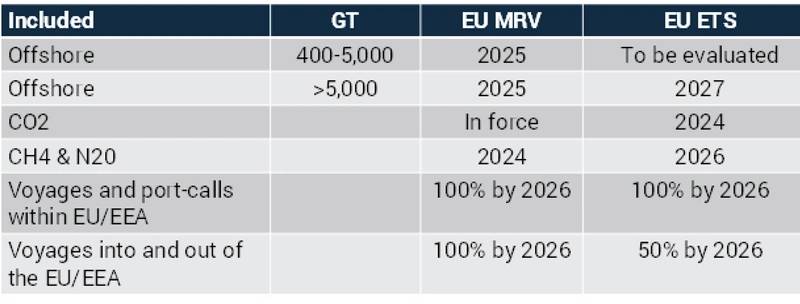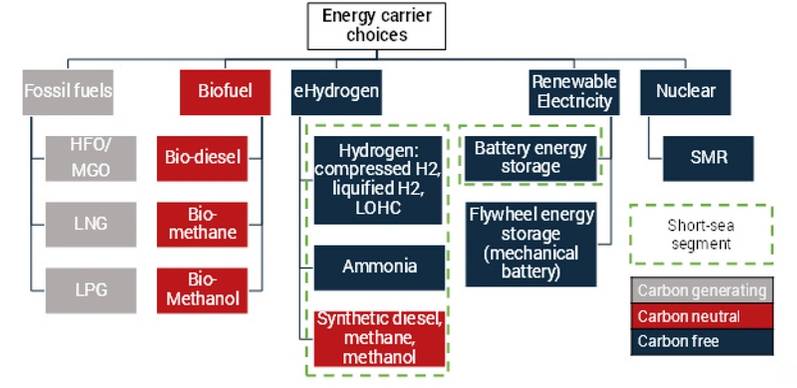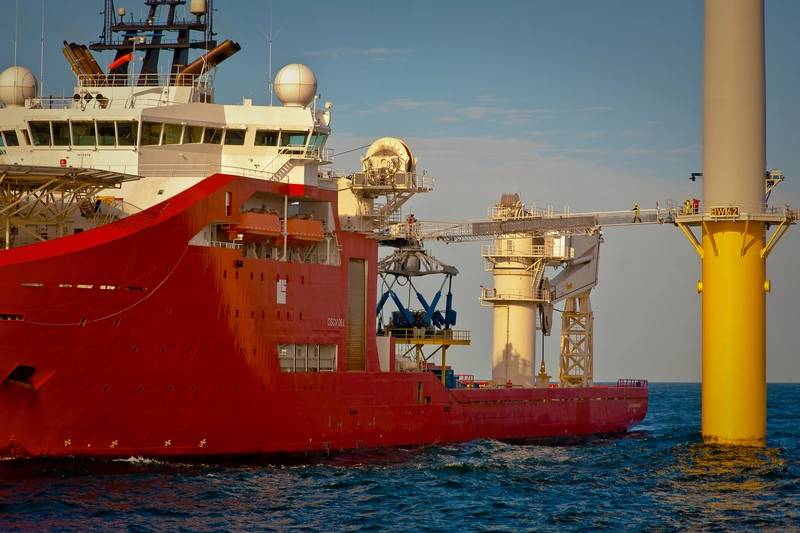
The energy transition is moving ahead amid recovery in offshore oil & gas and growth in offshore wind, leaving vessel owners that serve these markets with big questions about energy carrier and energy converter selection for their newbuilds.
What is driving the change?
The foundations of energy transition in the offshore and marine segment can be found at global, regional, national and local levels:
 Chart courtesy Intelatus
Chart courtesy Intelatus
In addition to these regulatory conditions, we find several other main drivers for choosing low or zero emissions fuels, including:
What are the choices?
As per the chart below, there are many choices of lower carbon, carbon neutral and carbon free energy carriers, some of which (ringfenced by the green dotted line) can be seen as more suited to shorter sea voyages typical of most of the offshore oil & gas and offshore wind fleet.
Depending on the trade and fuel supply, we see an increase in the number of hybrid energy systems, combining an internal combustion engine (dual fuel for flexibility) or a fuel cell with battery energy storage and shore power connections.
 Chart courtesy Intelatus
Chart courtesy Intelatus
And what about the challenges?
The first challenge is to choose the energy carrier(s) and the energy converter for a vessel. This will often be dictated by trade patterns, vessel size, local factors and the availability of internal combustion engine, fuel cell and/or battery energy storage system options.
Securing a supply of fuel is the next challenge. At present, most low and zero emissions fuels are in very limited supply. Further, the scale of most offshore vessel operating companies and trading patterns does not allow most owners to replicate what liner companies like Maersk have done, which is secure 1.4 to 2 million tonnes per year methanol supply from nine supplier partnerships in Asia and the Americas, and continue to review a further 30 partnerships in regions including Europe, Africa and the Middle East.
If you can get the fuel, the next challenge is the cost of the fuel. Carbon pricing, in markets like Europe, will help this situation, but at a fundamental level, green hydrogen, e-methanol and e-ammonia cost more than marine diesel and gas oil.
As many people know, certifying bunker quality is a major challenge today. But the challenge will only become more daunting. Taking methanol as an example, methanol can be produced from coal (brown), natural gas (grey), from carbon capture from another combustion process (blue), renewable sources (green) or nuclear (pink). The final product is always CH3OH. The question is how to ensure that the methanol in the tank is green.
And finally, there are a range of technical and operational barriers ranging from toxicity of certain fuels, lack of sufficient bunkering infrastructure, the impact on onboard storage based on the large volumes required to store hydrogen, ammonia and methanol, available of internal combustion engines, availability of fuels cells and battery energy storage systems and crew capabilities.
What else can we consider?
On top of the energy carrier/converter choice, there remain several other tools for lowering emissions intensity available to owners to consider, depending on the size of vessel. These include:
 Copyright AdobeStock/David Maddock
Copyright AdobeStock/David Maddock



